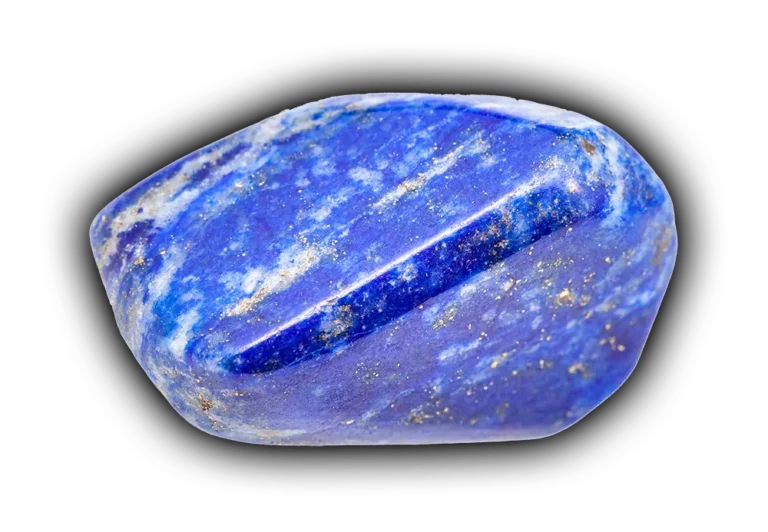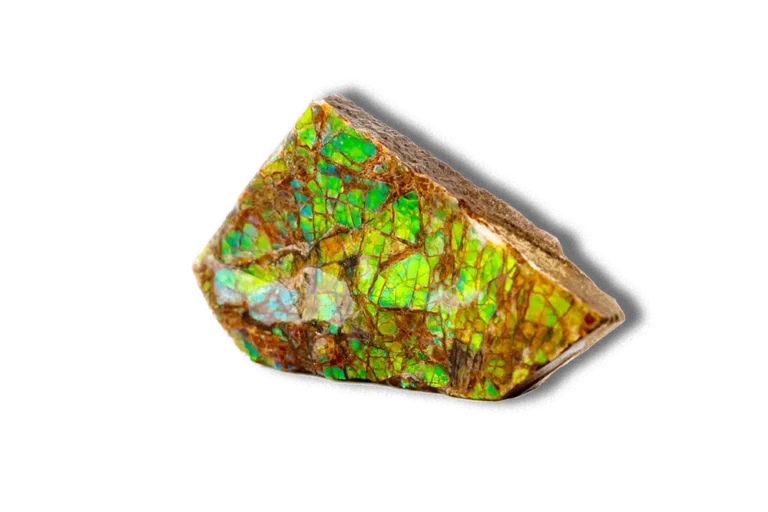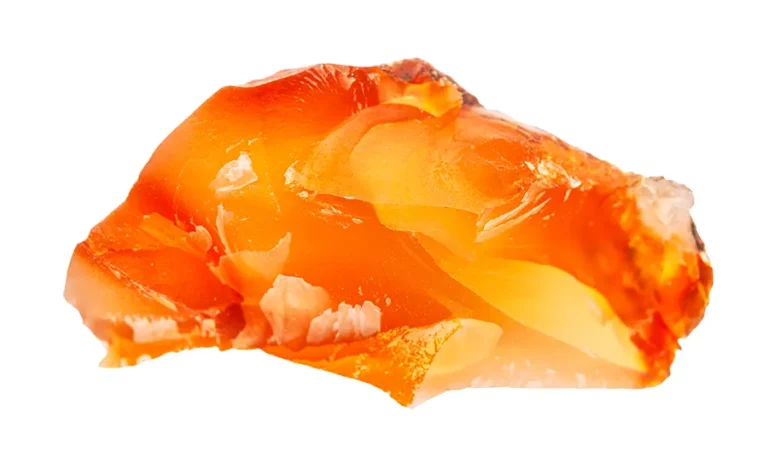Hessonite Garnet: Properties, Benefits & Meanings

Hessonite Garnet Overview
The Hessonite Garnet is a common orange gemstone variety of the Grossular Garnet. They are prevalent in India under the name “Gomed Stone.” The Gomed stone is famed for having many powerful abilities that help its wearer in different ways.
This article will discuss the properties, meanings, and uses of the Hessonite Garnet gemstone.
What Is Hessonite Garnet?
Hessonite garnet is an orange-colored gemstone that is well known in various circles for its alleged ability to grant self-confidence and stability to its wearer.
They are related to the sacral and root chakras of the body and are said to enhance your energy levels. It isn’t very expensive either, which is why it is so popular among the masses.
Origin Of Name
In 1803, Abraham Gottlob Werner first named grossular “cinnamon stone,” or “Kanelstein” in German. However, by 1808, he had renamed it grossularite—and this name comes from the color of gooseberries (Ribes grossularium).
The name Hessonite comes from the Greek word “Hesson,” meaning “inferior.” It was given this name as it is not as tough as most of the members of the Garnet group.
Pronunciation
Grossular \ˈgräs-yə-lər\ is pronounced as gros·su·lar. Its subtype Hessonite \ˈhe-sə-ˌnīt\ is pronounced hes·so·nite.
Synonyms For Hessonite/Gomed Gemstone
Hessonite has had many names in the past. Some of them are given below:
- Cinnamite
- Cinnamon Garnet
- Cinnamon Granat
- Cinnamon Stone
- Essonite
- False Hyacinth
- Hyacinthoid
- Gomed Gemstone
History
In the 19th century, Sir Arthur Herbert Church proved that many gemstones commonly thought of as zircon were Hessonite. The difference between these two minerals can be detected by their specific gravities: 3.64 to 3.69 for Hessonite and 4.6 for Zircon.
Where Can You Find Hessonite Garnet?
Hessonite Garnet is not too rare. It can be found in various parts of Asia, Europe, the Americas, and Africa.
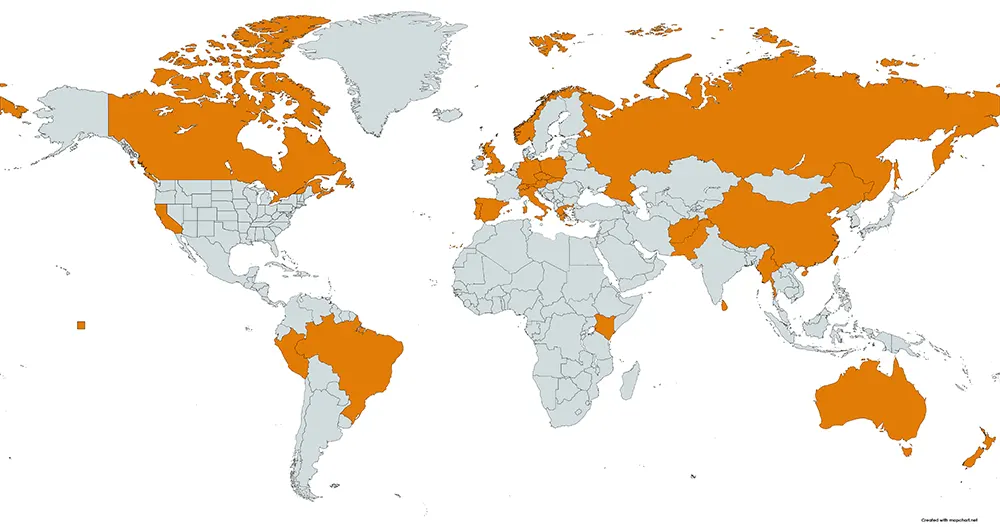
Hessonite Garnet Appearance
The Hessonite stone is an orange-colored vitreous stone. It is translucent and doesn’t show fluorescence. The orange color can vary between light and dark shades, sometimes even crossing over to red.
This color is caused by the presence of Fe+3 impurities present in the gem. If the iron content is higher than usual, Hessonite can appear red.
Hessonite Garnet Physical Properties
| Mineral Group | Grossular |
| Formula | Ca3Al2(SiO4)3 |
| Color | Brown, Orange, Red |
| Hardness (Mohs scale) | 6.5 – 7 |
| Refractive Index | 1.738 – 1.745 |
| Crystal System | Isometric |
| Luster | Vitreous, Sub-Vitreous |
| Specific Gravity | 3.594 |
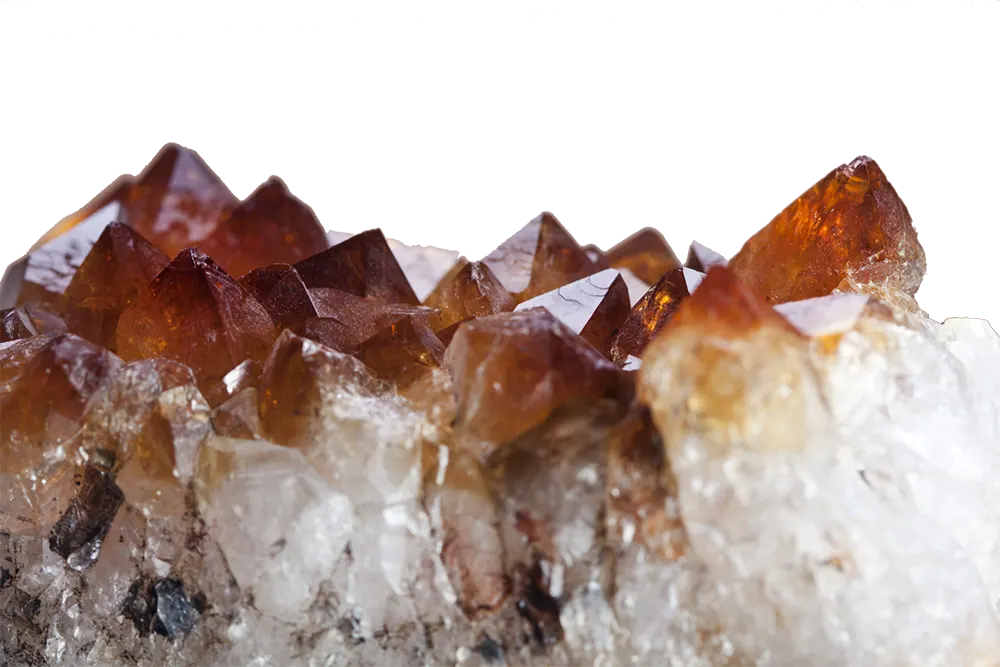
How To Tell If Hessonite Garnet/Gomed Gemstone Is Real?
Hessonite garnet is a common gemstone, so it’s unlikely that an unscrupulous jeweler would sell a less expensive gem under its name. However, some scammers may use colored plastic or glass to make fake gemstones that resemble Hessonites.
You can identify a counterfeit gemstone using these guidelines:
- Color Depth: Genuine gemstones are not one solid color throughout; they have varying hues across their body. A dull, uniform-looking Hessonite gemstone is probably not real. This type of coloration is an indication of dying.
- Scratch Test: Hessonite is a hard mineral with a Mohs hardness rating of 6.5 to 7. The mineral’s hardness makes it difficult to scratch. When you try to cut a gemstone with a knife, for example, you should not scratch the surface of that stone. If you can leave marks on it, it is likely colored glass.
- Acetone Test: Place the gemstone in an acetone bath. If you notice a stain in the acetone solution after a few minutes of soaking, then the Hessonite is not authentic. Natural gemstones shouldn’t release color in acetone.
- Transparency: If you see an opaque gem that is not transparent, it may have been artificially colored. Genuine Hessonite crystals are translucent or transparent.
If you are unsure whether your gemstone is natural or not, take it to an expert. They will be able to tell by various tests—such as using a refractometer, a type of instrument used in modern chemistry and physics, to test its optical character and match it to their database. Some tools used to verify the truth of a gemstone include microscopes, polariscopes, and Hardness sets.
Hessonite Garnet/Gomed Stone Value
Four attributes determine the value of a gemstone: carat weight(the weight of the gem), cut (how well it’s crafted and polished), clarity (how many imperfections and inclusions it has), and color.
Carat
Because large stones are rare and take more effort to mine, they command a higher price than smaller ones. The most common size of Hessonite stones is 0.25 Ct. The largest ever recorded Hessonite was weighed in at about 23 carats. On average, you can find these gemstones at a respectable size of 5 carats.
Cut
The cut of an uncolored gemstone is the most critical factor in determining its value. The well-cut stone will reflect more light than one that is poorly cut—which means it looks better to the naked eye and has a higher market price.
A well-cut stone with no flaws that reflects light in all the right ways will be much more expensive than a poorly cut one.
In the case of colored gems, color can play a more significant role in determining the value than the quality of the cut.
Clarity
The clarity of a gem is related to the number and type of imperfections found within it and its transparency. Some gems—like moss agate — derive most of their value from inclusions’ patterns rather than their absence.
For gemstones, in general, the presence of a few minor imperfections can reduce their value. A stone’s clarity is partially determined by how well it has been cut, so if you have an inclusion-free stone that has been poorly cut (and thus lacks sparkle), then its worth might be less than one with more imperfections but excellent cutting.
Color
The color of a non-transparent gemstone is the most significant factor in determining its price. The color of a stone comprises four components: intensity, continuity, depth, and pattern.
- Intensity: Vibrant stones are more desirable than dull-colored ones. A bright orange Hessonite will sell for more compared to a duller piece.
- Continuity: Continuity is somewhat related to the clarity of the stone. If the color is interrupted in the gem by blemishes and imperfections, it will not look as good and, therefore, will be worth less.
- Depth: Depth and intensity are similar in concept. Deeper colors are considered more desirable in the market.
- Pattern: Pattern is considered the premier determinant of the value of colored stones. Unique and exciting patterns on a gemstone will attract customers, and as the demand increases, so will the price.
The color of a stone is often what makes it so desirable, so if you have a bright blue sapphire or fiery red ruby, you’ve got yourself a valuable gem. The most expensive colored gemstones are those with vivid and intense colors. For example, the world’s most expensive diamond is the Blue Diamond. These diamonds have impurities in their crystal structure that give them a blue color.
The most expensive colored gemstones are those with vivid and intense colors. For example, the world’s most expensive diamond is the Blue Diamond. These diamonds have impurities in their crystal structure that give them a blue color.
The important point is that some colors are more valuable than others. For example, a red diamond is not as expensive as a blue one, as blue is considered a more desirable color. In the case of the Gomed stone, Ceylon is the most sought-after variety. Ceylon Gomded is a particular variety of Hessonite that is mined in Sri Lanka.
Price Per Carat
As the price does not scale linearly with the size of the stone, it is necessary to mention that different-sized stones will have different prices per carat.
For Hessonite stones, 8×6 mm stones are available in the $15-40/Ct range. 9×7 mm gems are available for $18-45/Ct. You can buy 10×8 mm stones for $20-50/Ct.
High-quality Hessonite garnets with fewer imperfections and better colorations can go a bit higher.
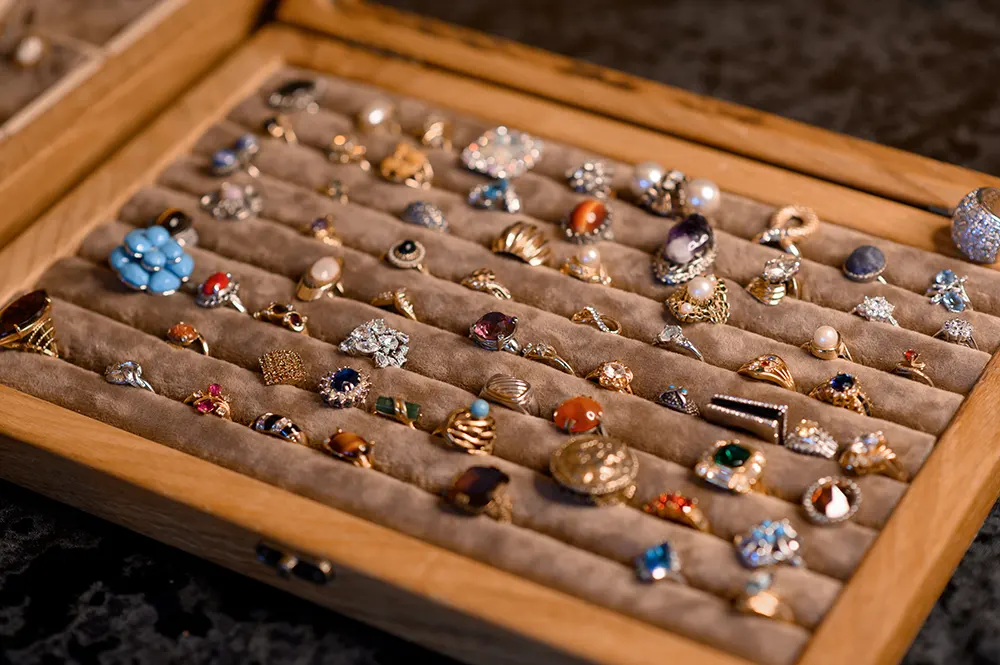
Hessonite Garnet Chakra Connection
The primary connection of the Hessonite garnet is with the Sacral Chakra, Svadhisthana. This chakra is located below the navel, near the perineum, and is associated with the orange color. The Sacral Chakra is related to the sex organs, libido, and the water element.
Hessonite also has a secondary connection to the Root Chakra, Muladhara. This chakra is located at the base of your spine. Root chakra symbolizes many things, but its primary purpose is to provide stability and security.
Hessonite Garnet Meaning And Uses
- Hessonite gemstones make an excellent addition to the bedroom. They increase libido and bring self-confidence to the wearer.
- They can help you become more comfortable in your skin and boost your self-confidence. They’re also suitable for people who are dealing with sexual issues. Hessonite Garnets are an excellent choice if you also want to attract love.
- Hessonite Garnets are also said to be good for the kidneys, bladder, and general fluid retention issues.
- Alternate Medicine Practitioners use Hessonite stones to treat GIT imbalances, liver diseases, back pain, and spiritual imbalance.
- Hessonite is a stone of balance, bringing harmony to the wearer’s life. It can help you find your center and bring stability when you feel things are spinning out of control.
- These crystals relate to stability. Hessonite necklaces can help you be less affected by outside influences and to remain calm in the face of chaos.
- It can help heal the mind, body, and spirit by enhancing your self-awareness.
- Hessonite necklaces help enhance the energy of the wearer. These crystals give them a much-needed boost at the start of the day.
- Hessonite rings can help you to stay calm and focused when you are faced with challenges. They will also help you identify what needs to be done to create the necessary changes in your life.
- These crystals can be used for protection against negative energy, which can affect our emotions and health.
- Hessonite helps you reach your goals and maintain them once attained.
- They are also very beneficial for those who suffer from depression or mood swings as they bring harmony to your emotions and help you keep a positive outlook on life, no matter the challenges.
- Hessonite stones are also very useful for helping the wearer to manage stress and anxiety. This makes it an excellent stone for meditation because it helps clear your mind of clutter and stress to achieve a peaceful state of being.
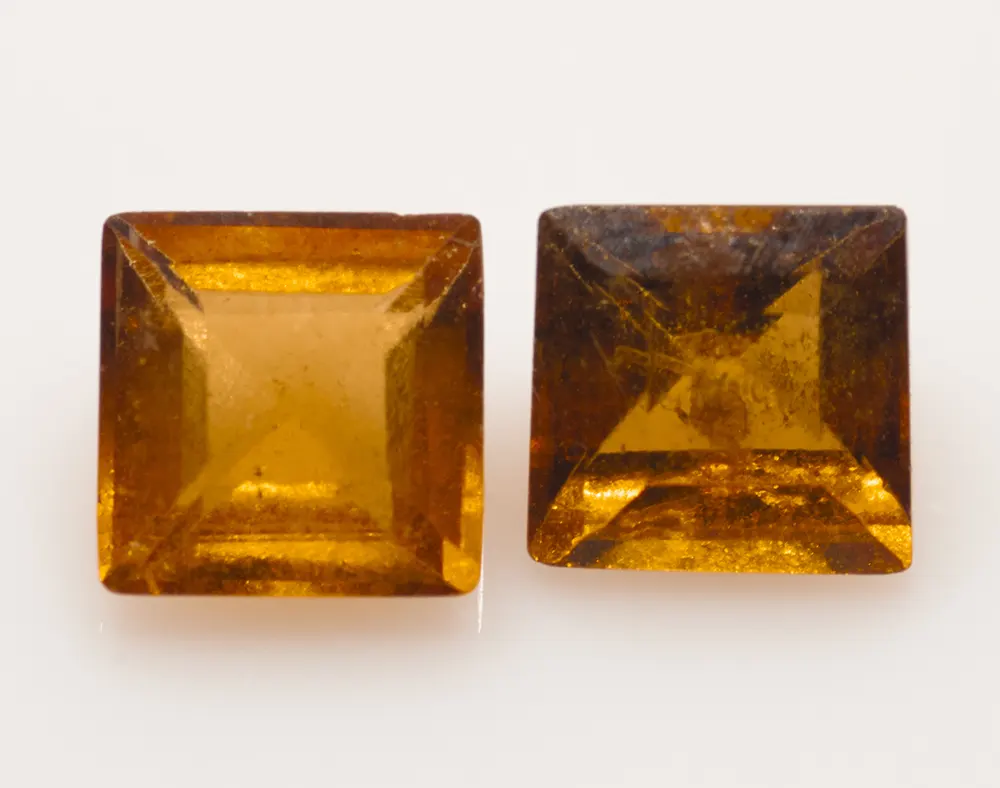
How To Clean Hessonite Garnet Jewelry?
Taking care of your Hessonite jewelry is essential to help it retain its beauty.
- Soak the jewelry in a solution of lukewarm water and gentle soap for a few minutes.
- Take the jewelry out of the solution and gently rinse it. You can use a soft toothbrush to scrub the jewelry when you can’t get a stain out.
- You can gently buff the crystal with a microfiber cloth once it has been thoroughly dried/polished. Try not to use a cotton cloth as it can leave lint.
- Your stone absorbs negative energy over time. To remove it, you should use a smudge stick. This will cleanse the stone and prime it for future use.
- Expose your gem to moonlight or bury it underground to recharge its energy. Give it a few hours, but doing it overnight is best. Once the energy is recharged, the stone will be as good as new.
In general, it is better to avoid steam or ultrasonic cleaners as they can damage the gemstone embedded in the jewelry.
FAQ
Which Gemstones Go Best With Hessonite Garnet?
Hessonite pairs well with gemstones aligned with the Sacral or Root chakra. Gems like Onyx, Sardonyx, Red Zircon and Sard work harmoniously with Hessonite and enhance its effects.
Since they belong to the supergroup, the Hessonite Gemstone and the Tsavorite gemstone work well together. Their abilities complement each other and work harmoniously.
Hessonite also works well with quartz stones like Amethyst and Carnelian. The quartz stones resonate with Hessonite’s abilities, enhancing them and increasing their efficacy.
What Is Hessonite Garnet Good For?
Hessonite is good for stability, libido, and harmony. It relaxes the wearer and is often used during meditation. It also grounds them, allowing them to enhance their connection to the Earth and feel nature in all its glory.
It is also suitable for creativity, manifestation, and divination. Hessonite can be used to attune your energy to the Earth’s vibrations, allowing you to feel more connected and in tune with nature. It helps you realize that we are all one.
What Are The Healing Properties Of Hessonite Garnet?
Hessonite is a potent stone, and you can use it for a variety of purposes. It helps heal the mind, body, and spirit by enhancing self-awareness and creating a balance between the yin and yang energies within you.
Hessonite pendants are said to be good for kidney, bladder, and general fluid retention issues. In addition, alternate Medicine Practitioners use hessonite stones to treat various conditions, including gastrointestinal problems, liver ailments, and back pain.
Which finger Should I put the Hessonite Ring on?
According to the Vedic system of belief, the best place to wear a Hessonite ring is on the middle finger of the right hand. Even left-handed people should wear it on the right hand as this finger is ruled by Saturn, which is aligned with the Hessonite gemstone.
In some exceptional cases, you may also wear it on the pinky finger or the index finger. This stone is related to the planet Rahu as described by Vedic astrology.
Additionally, the preferable day to wear this gemstone is on Saturday and Wednesday, right after sunset or sunrise.



